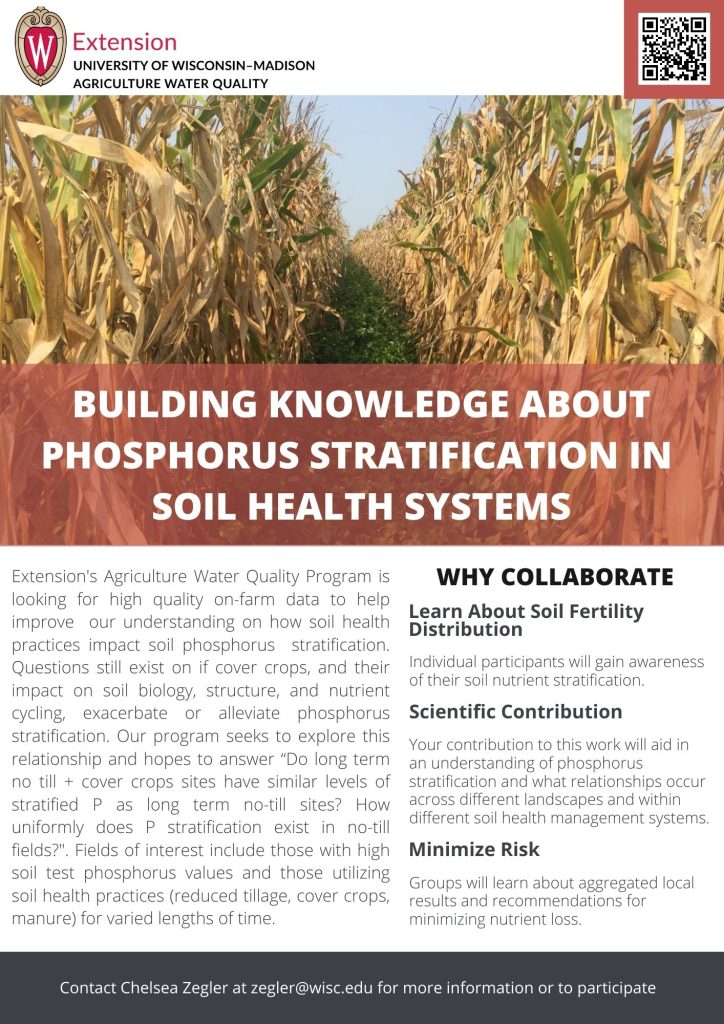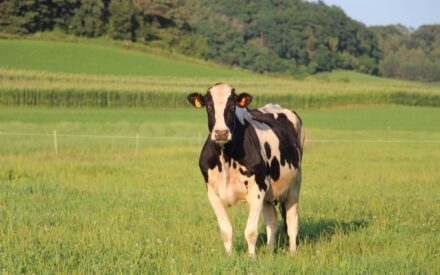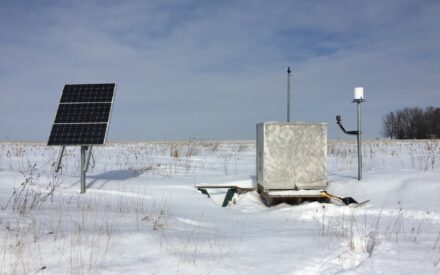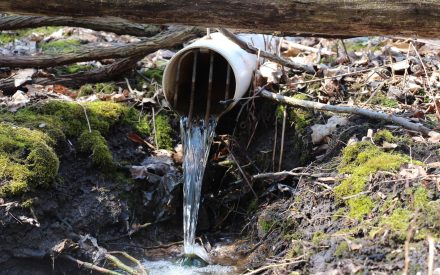Extension’s Ag Water program at the University of Wisconsin-Madison is looking for high-quality on-farm data to help improve our understanding on how soil health practice impacts soil phosphorus stratification.
Nutrient stratification occurs across most agricultural fields, however high soil test phosphorus values at the top inch or two are often associated with no-till fields, where fertility is often surface applied. Research has shown that high levels of soil test phosphorus in the top two inches lead to increased dissolved phosphorus loss from fields, especially on frozen ground. A time period where we struggle to control water and phosphorus movement. Questions still exist on if cover crops, and their impact on soil biology, structure, and nutrient cycling, exacerbate or alleviate phosphorus stratification. Our program seeks to explore this relationship and hopes to answer “do long term no-till + cover crops sites have similar levels of stratified P as long term no-till sites? How uniformly does P stratification exist in no-till fields?”
We are looking to collaborate with individual farmers or farmer groups on a soil test phosphorus survey. Individual participants will gain soil test results and an analysis on how nutrients are distributed within the top 6 inches of their fields. Groups will receive outreach and education on aggregated results and recommendations for minimizing water quality risks.
Fields of particulate interest include those with high soil test phosphorus values, and those utilizing soil health practices (reduced tillage, cover crops, manure) for varied lengths of time.
Contact Chelsea Zegler at zegler@wisc.edu for more information or fill out this form to start the process.


 ▶ Watch: Grazing and Water quality, Lessons learned from edge-of-field research
▶ Watch: Grazing and Water quality, Lessons learned from edge-of-field research Discovery Farms- Rock County Monitoring Report
Discovery Farms- Rock County Monitoring Report A cost-effective approach for on-farm tile monitoring
A cost-effective approach for on-farm tile monitoring Communicate more effectively with farmers about adopting practices to protect water quality based on these new social science research strategies
Communicate more effectively with farmers about adopting practices to protect water quality based on these new social science research strategies


